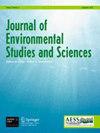佛蒙特州的环境正义是什么样的?从边缘将视角居中
IF 2.3
Q3 ENVIRONMENTAL SCIENCES
引用次数: 0
摘要
直到2022年,佛蒙特州是美国少数几个没有环境正义(EJ)政策的州之一。2016年,佛蒙特州环境保护部(DEC)根据与美国环境保护署(EPA)达成的协议,启动了制定EJ政策的程序。一个由学者、非营利组织领导人、法律专家和社区合作伙伴组成的联盟响应了DEC最初的方法,因为它缺乏一个强有力的程序来集中佛蒙特州最弱势群体的声音。该联盟开发了一种混合方法,以社区为基础的方法来询问,“佛蒙特州的EJ是什么样子的?”这篇文章报道了更广泛的研究工作中挨家挨户的调查部分。对569名佛蒙特州居民的调查有目的地选取了可能造成环境危害和健康问题的地点,以及与正在进行的EJ斗争的活动家和社区组织有联系的地点。调查结果使用逻辑回归显示,抽样地点的非白人受访者更有可能租房,报告暴露于霉菌,难以支付食物和电费,缺乏公共交通工具,不太可能拥有车辆,有初级保健医生,并且报告莱姆病的发病率高于白人受访者。我们的研究结果有助于EJ理论关于环境特权和环境危害之间的共生关系,在佛蒙特州作为具有丰富环境效益的环境领导者的持续特征的背景下。本文章由计算机程序翻译,如有差异,请以英文原文为准。
What does environmental justice look like in Vermont? Centering perspectives from the margins
Abstract Until 2022, Vermont was one of the few US states that did not have an Environmental Justice (EJ) policy. In 2016, the Vermont Department of Environmental Conservation (DEC) initiated a process to create an EJ policy based on an agreement with the US Environmental Protection Agency (EPA). A coalition of academics, non-profit organization leaders, legal experts, and community-based partners formed in response to the DEC’s initial approach because it lacked a robust process to center the voices of the most vulnerable Vermonters. The coalition developed a mixed-method, community-based approach to ask, “What does EJ look like in Vermont?” This article reports the door-to-door survey portion of that broader research effort. The survey of 569 Vermont residents purposively sampled sites of likely environmental harm and health concerns and sites with existing relationships with activists and community organizations engaged in ongoing EJ struggles. The survey results use logistic regression to show that non-white respondents in the sites sampled were significantly more likely to be renters, to report exposures to mold, to have trouble paying for food and electricity, to lack access to public transportation, were less likely to own a vehicle, to have a primary care doctor, and reported higher rates of Lyme disease than white respondents. Our findings contribute to EJ theory regarding the co-productive relationship between environmental privilege and environmental harms within the context of persistent characterizations of Vermont as an environmental leader with abundant environmental benefits.
求助全文
通过发布文献求助,成功后即可免费获取论文全文。
去求助
来源期刊
CiteScore
3.60
自引率
9.50%
发文量
75
期刊介绍:
The Journal of Environmental Studies and Sciences is the official publication for the Association for Environmental?Studies and Sciences?(AESS). Interdisciplinary environmental studies require an integration of many different scientific and professional disciplines. The AESS and the Journal provide fora for the advancement of interdisciplinary approaches to the study of the coupled human-nature systems. A major goal of AESS is to encourage this advancement by promoting related teaching research and service and by facilitating communication across boundaries that may inhibit environmental discourse across traditional academic disciplines—for example between and among the physical biological social sciences the humanities and environmental professions. This commitment also involves supporting the professional development of Association members and advancing the educational status of Environmental Studies and Sciences programs. The Journal provides a peer-reviewed academically rigorous and professionally recognized venue for the publication of explicitly interdisciplinary environmental research policy analysis and advocacy educational discourse and other related matters. Contributions are welcome from any discipline or combination of disciplines any vocation or professional affiliation any national ethnic or cultural background. Articles may relate to any historical and global setting. These contributions should explicitly involve multi-disciplinary or trans-disciplinary aspects of environmental issues; and identify the way(s) in which the work will contribute to environmental research policy making advocacy education or related activities.

 求助内容:
求助内容: 应助结果提醒方式:
应助结果提醒方式:


